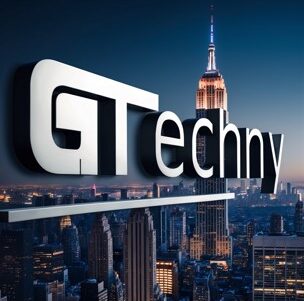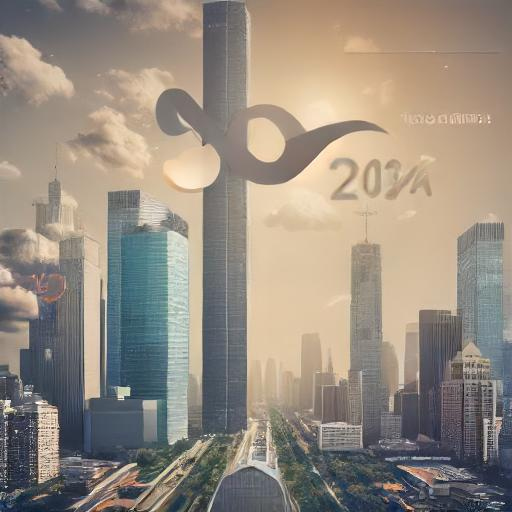It’s 2024, interest rates are high, technology giants are driving virtually all innovation, and Artificial Intelligence capacity is somewhere between stunning and scary. What’s always spurred growth was opening new markets, what’s always helped calm down inflation was raising interest rates, and new gadgets have always excited consumers.
What’s behind those slogans, beyond overly repeated news headlines?
Interest rates.
When George W. Bush left his second term, he left behind a legacy few Presidents would want to mention. Historic financial powerhouses – Lehman Brothers and Bear Sterns went out of business. Detroit’s automotive industry was falling apart. 9/11 was long ago, but the War on Terror continued, with US ‘boots on the ground’ all over Afghanistan and Iraq, costing thousands of US lives and billions of dollars. The economy was sinking, quickly deeming hope for a festive start to Obama’s first term. Coined a ‘socialist’, oddly, Obama opted not to punish the big firms for taking huge risks, reminding instead that they were indeed ‘too big to fail’ and baling out everyone from AIG to General Motors. He’s also added extended unemployment support for laid off workers and worked together with Elizabeth Warren to implement bank safety measures, like the Dodd-Frank Act. The Federal Reserve eventually dropped the interest rates to ‘near zero’, spurring growth and bring life back to the economy. As usual, the US recovered faster than the rest of the world, but eventually Obama left, and Trump’s election allowed for Paul Ryan’s childhood dream to finally be realized – lower taxes for everyone, including the richest corporations and individuals, even though they didn’t need it and were doing very well. Forward a few years, and the pandemic enveloped the world, people stayed glued to TV screens, listening to Andrew Cuomo methodically explain to everyone what he was doing to run the New York in those conditions, and the Fed swiftly dropped the rates to ‘near zero’ again. An unreal amount of money entered the US economy. $600 checks went to regular citizens, who lost their jobs, $1,200 checks went to everyone, even the employed, and corporations got trillions of dollars, on top of no interest for money borrowed, in programs, like Paycheck Protection Program and various barely secured SBA Covid loans. ‘The Wall Street Party’ began, and before too long, the Dow’s value doubled, even hitting 40,000 points by this year. Trillion-dollar values of the Big Tech sound unrealistic, but growth is good, right? Software engineers started getting multiple $200K-300K offers within a week of starting their job search, remote work allowed for people to hold multiple jobs at the same time, and DEI was the hippest thing to observe.
At the same time, inflation reminded people that there is a price to pay for everything. It may have not been the 24% inflation of 1920, which spurred the New Deal, but the 9% mark was just too troublesome for everyone by mid-2023, especially coupled with mass layoffs, which were mostly explained as ‘pandemic over-hiring’ at the time. It caused the Prime Rate to increase to 8.5%, eventually brining the inflation to 3.4%, just a tad above the long-term average of 3.28%, or the desired, but permanently illusive, 2% mark. It wasn’t Paul Volcker’s 19.10% of 1981, but the generally spoiled by the pandemic’s ‘free money’ consumer audience began to cry rivers. The $200K-300K offers largely vanished, and job searches extended into long, and often seemingly hopeless, months of job search. Those, who didn’t get laid off, stayed put, afraid to risk their wellbeing by switching to a new opportunity, while trying to understand how they financially stretched themselves so thin, that even $300K seemed less than what middle class has grown to expect. Jerome Powell finally admitted that raising interest rates isn’t as effective at stifling inflation, as in the past, but the first half of the year rate cuts obviously didn’t materialize, a July cut is all but certain not to happen, and a single, likely quarter of a percent cut in the fall, before the election, seems to be the last hope for improvement. That ¼ of a point would make very little, if any, difference for almost everyone, except some finance experts, with borrowing costs rising to about 7%+ for mortgages (secured) and 25% for credit card loans (unsecured). Startup funding grinded to a halt, with firms like Andreessen giving less than usual only for those, already showing a revenue stream, while founders with great ideas only tend to rely on their own savings and pipe dreams.
Innovation from technology giants
Sam Altman may be another ‘tech geek’ of sorts, but so are Bill Gates, Mark Zuckerberg, and Elon Musk, founders of some of the most successful US corporations. He may not be able to properly detach himself from his love of Her/Scarlett Johansson, but his ChatGPT completely turned the world upside down, and so far, in a good way. Generative AI has been the one bright spot in growth, while many other initiatives, like electric vehicles and driverless taxis, have been losing steam. Yet, unlike Bill Gates’ garage, OpenAI got unreal amounts of money from Microsoft to get going, and Sam even went as far as asking for trillions of dollars to solve the US chip manufacturing dilemma.
Large technology firms, from Salesforce to Microsoft’s Azure, offer GenAI additions to their platforms, but training LLM models is an expensive endeavor, like News Corp making hundreds of millions from OpenAI. Long-term ROI on those expenses, especially in the current credit crunch, is hard to afford, or even predict, while short-term it’s making absolutely no difference. Musk’s xAI is enjoying the infusion, while most of the Silicon Valley is littered with broken hopes and dreams. New AI ventures generally fizzle out or gain billion+ dollar valuations and get acquired, like Run:ai being swallowed by Nvidia to improve its hardware presence.
OpenAI itself may seem like a startup success story, but how many new ventures get this much financial assistance to get started? It seems, that the current model isn’t supporting new ventures, like before, instead leaving Biden’s DOJ to scratch its head and spread itself too thin, investigating Boeng’s safety mishaps and LiveNation’s anticompetitive practices, while hoping the economy won’t slow down as the result. Elliott Spitzer wrote almost too long ago about the need to pay attention to companies getting too monopolistic, while Elizabeth Warren’s calls to break up companies sound more like ‘Boy who cried wolf’. These Big Tech advances seemingly only make it more difficult for new players to emerge, unless they are willing to pay homage to their Big Tech bosses, who’ll rescue them, if they mess up, ala Altman’s quick return to the helm of his firm. Who cares, that he disbanded the AI safety team and his partners left him?
Artificial Intelligence Growth
Talking about OpenAI disbanding their safety team to no fanfare, does Musk’s suit against them make a little more sense? Didn’t all social media get in trouble long ago for misinformation? Why are AI-generated voices and images mostly ignored, unless politics is involved, and why do we not care about Sarah Conner’s, or Morpheus’, warnings of a dystopian future?
Snowflake’s earnings are still stunning, but their stock fell, because they weren’t stunning enough. The drive to become industry’s leader is a tough race, but the alternative is vanishing into obscurity. Failed ventures, no matter how big or how real, like WeWork, or fake, like Theranos, are quickly forgotten. Anything less than a 10 for 1 split for Nvidia, after almost fantastic growth, seems to small to notice, when even hard facts get sensationalized, as if a Hollywood movie.
The hard truth is that the expense of AI growth, combined with high interest rates, makes it borderline impossible for brand new ventures to succeed, even without training own models and plugging into OpenAI’s developments instead.
Opening new markets
Long gone are the days, when venturing into the unexplored land equaled success. Conquests and wars aside, when Richard Nixon open China as the preferred supplier of manufactured goods, it allowed for the US to become more of a land of service offerings. US Steel used to be the largest US company, but it’s so much cheaper to import. Being a lawyer, a stockbroker, or a management consultant is far more lucrative than working at a factory, even with the support of labor unions. When outsourcing became the way to cut costs after Y2K, India and other countries enjoyed the same benefits of doing the US work at a lower cost, as China did. Emerging Markets became a trend a bit later, and South America, Eastern Europe, and other parts of the world suddenly presented interest to US financial powerhouses. Biden is finally catching onto China’s current dominance in Africa, hosting Africa’s leaders and promising to provide internet access to most of Africa. Middle East has long been a source of energy reserves/oil.
Current global conflicts are making it harder to literally go beyond our borders. The war in Ukraine alienated Russia, as the aggressor. The war in the Middle East is presenting a lot of uncertainties also, with Iran opposing the US dominance there, and other local nations not truly willing to support the country, which is still largely associated with the war in Iraq and anti-Arabic priorities, oftentimes fueled by anti-Muslim sentiment from parts of the West. Taiwan is trying to counteract China’s drills, with a renewed trade war between China and the US; South American countries go through wild swings from dictatorships to Western-style democracies; India is buying weapons from Russia, while Modi is hosted at the White House; North Korea and Iran are threatening the world with their nuclear advances; and Myanmar junta keeps on kidnapping kids, just to name a few ongoing issues.
What that leaves for the US companies is over-commercialization of the US consumer, as even Apple’s and Tesla’s sales in China have taken a hit. How much longer, till the US consumer completely runs out of money accumulated during the pandemic, national debt reaches unmanageable levels, and let’s not forget the likely upcoming commercial real estate crisis, which is a single loan maturity away from taking place?
Today’s new gadgets
That brings up the topic of engaging consumers on a new level. New devices used to always work as the winning model. From PC’s taking over the world, especially thanks to Dell’s inexpensive and flexible solutions, Steve Jobs’ Apple revolutionized the personal devices industry by introducing iPhone, iPad, and iPod to the masses. After at least a decade of constant annual minor upgrades costing more than each previous version, consumers are getting a bit tired of chasing the latest offering. iPhone sales drastically slew down, electric cars no longer excite buyers either, even as Tesla dropped its prices, Facebook’s move to Metaverse was a dud, smart watches largely proved to be useless, Apple Vision Pro is too expensive for most and largely useless, and Humane’s AI Pin literally doesn’t work most of the time.
Still, despite all of those obstacles, consumer spending is at an all-time high. People WANT to pay for new goods and services. Most successful startups overpay to get consumers’ attention, backed up by hundreds of millions of dollars in funding, but what about the less-funded ones? Their pitch decks largely look like a bad ChatGPT-created advertisement; business plans offer so much unnecessary information, that it takes a real expert to even comprehend if there is more to their offering; and founders are looking for unrealistic funding rounds, either in desperation or being confused by the headlines of other successes.
Perhaps, with all of the advances in GenAI, technology in general, business and operations, it’s about the good old outside-the-box thinking and business development/partnerships/sales. It’s a slower drip, than you find at Starbucks on a lazy weekend mid-afternoon, but anything less than the best…



